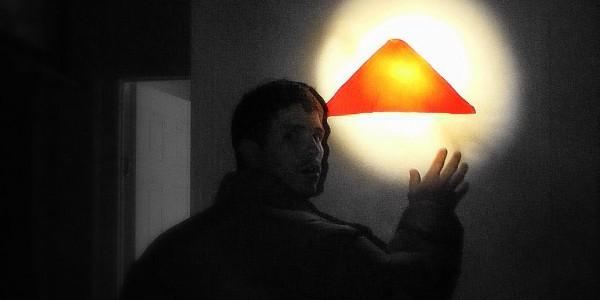I came into this week thinking that by today (or maybe Saturday), I would have written a column about love in video games. It’s a topic I’ve been meaning to address for some time now, and this seemed as good a time as any to finally get the show on the road.
Then I realized that yesterday was Valentine’s Day, and although I’m all for love and romance, I am not into being told when to publish articles pertaining to a particular topic. Holidays tend to do that to people, as one can quickly surmise after noting the multiple “video game romance” features that have undoubtedly found their way onto the internet this week.
No, I actually HATE being told what to do, and I hate being told WHEN to do it. That’s why after sitting down to play Resident Evil: Umbrella Chronicles this afternoon, there was little question as to what today’s column would bemoan. Capcom’s latest “ZOMBIES-COMIN’-UP-THE-HELL-RIGHT-NOW!” -fest reminded me of a gameplay element that is simply not my style. That is, designated “save points.”
If you’ve ever played a survival horror game, an RPG, or any of a number of other games, then you know the drill:
1. Developer designates a specific area where saving one’s progess may take place, leaving the rest of the virtual world devoid of any game-saving apparati.
2. Gamer plays the game, and eventually has a desire to preserve his/her progress.
3. Player wastes time and energy wandering around in search of developer’s saving doohickey, just to feel secure about moving forward.
That’s the basic jist of the system, which is occasionally jazzed up to seem more functional, or cleverly masked to be discretely hidden from the spotlight. In either case, it is still an outdated and non-optimal way to record game data.
The Resident Evil franchise is notorious for using a rather draconian version of this lovely type of saving system, where players are required not only to be in the right place, but to carry the proper item used for saving. The Silent Hill series adopted a similar, though less cruel method, and many JRPGs now feature some sort of glowy crystal or futuristic DDR pad that must be activated in order to get anything written to your console’s hard drive (or memory card).
The term “save points,” to clarify, doesn’t necessarily mean physical locations within a game world, so long as they are readily accessible. The major problem arises when a player is only allowed to save at a specific point in time. Often, the two go hand-in-hand, however, because that span of time happens to coincide directly with the trek required to reach the location of the next save point. In a linear sort of game (which comes rife with plenty of other criticisms, of course), the problem is exacerbated. Strung along from one save point to the next, players can be left feeling utterly helpless and completely in the dark. That’s the way the content is supposed to make us feel, not the shoddy game design!
The point is, you can’t save the game when you want to save the game, and that’s a problem. People (no matter how much we may want to) do not live inside of our game worlds. There are other obligations we all have, and plenty of time constraints on most of our lives. Should something urgent ever arise during a game session, the answer is not as simple as, “ok, just let me find a save point before I quit.” Sometimes the game loses that coin toss, the console gets turned off, and there goes an hour of your life. Of course the machine could be left on, but power surges, outages, and other interruptions are not exactly a gamer’s best friend. Besides, why does the player need to create solutions for a problem that the developer should have remedied in the first place?
Further, and more importantly, the “save point” system has profound effects on the concepts of failure and consequences in video games. When a player is doomed to repeat great spans of success before getting the opportunity to correct the singular failure that initiated that deja vu-like cycle, the seamless video game experience that gamers live for is destroyed. Re-trial of the task is spaced so far apart from the original failure that improvement in that area can only be minimal, in many cases. These situations promote reoccurring failure, rather than growth and progess. This can even drive players away from a game completely. Frequent saves (at the player’s will), on the other hand, allow for the more frequent repetition of ONLY the failed challenge. Rehearsal such as this lends itself to greater chances for success, and curb the player’s likelihood to feel discouraged and give up.
Some might argue that designated save points are important for certain genres, such as survival horror. In these games, they serve to increase the suspense and tension the player feels while exploring the game world. Clearly, that’s a bulls*** defense of the gameplay mechanic, because the sort of fear alluded to in an argument such as that is a direct result of the way the game has been built, not the material from which it has been crafted. Like I said before, it is the game’s content that should torment us, not its poor design.


















